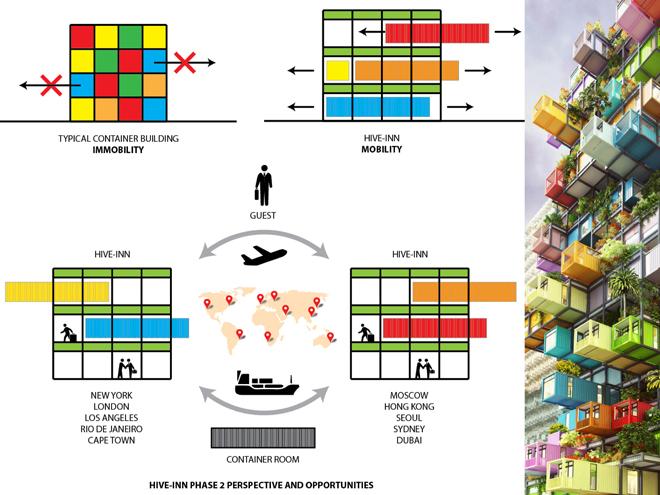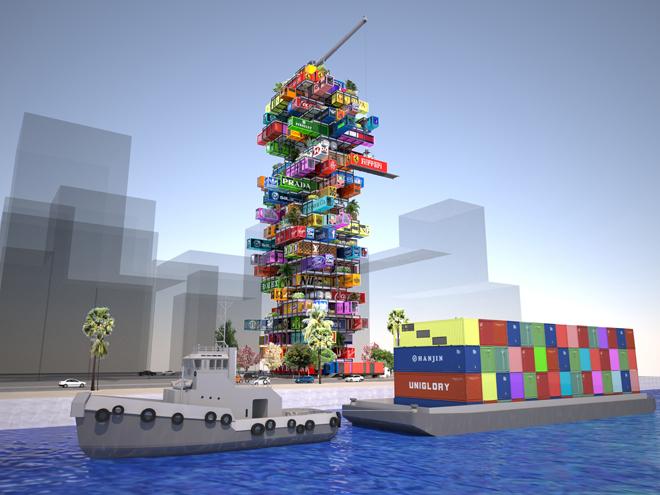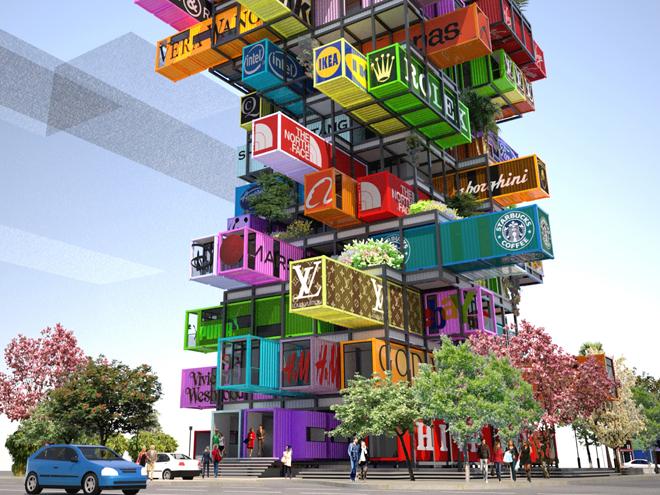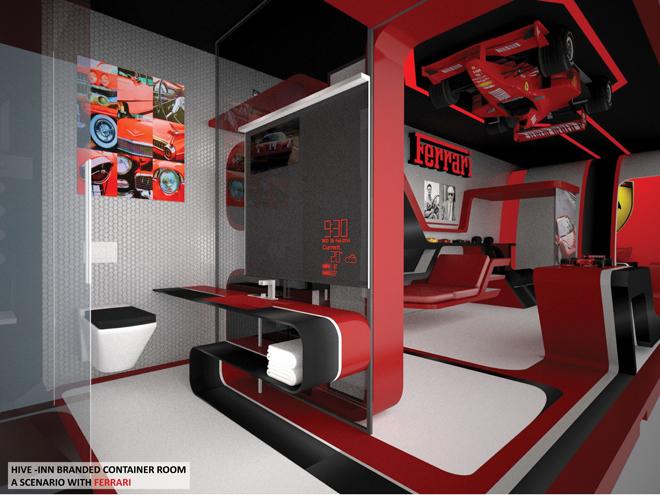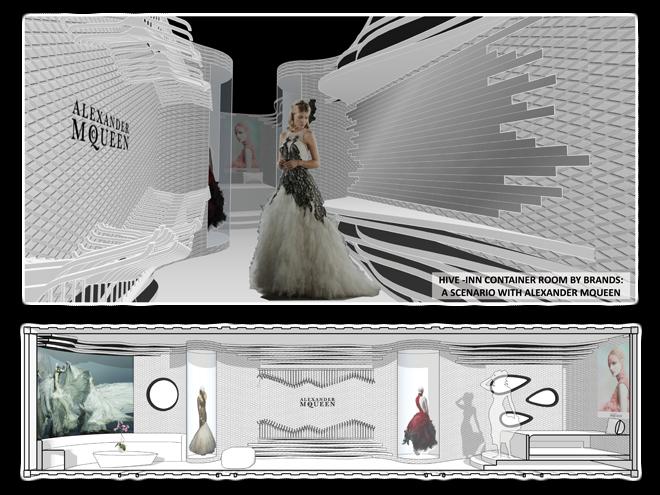Not only did Hong Kong-based OVA envision a unique method of paying for this shipping-container hotel concept, the firm designed a structure that could be altered on a whim.
Shipping container architecture has caught on recently, as in the case of this student housing development in South Africa. Like that apartment complex, the Hive-Inn would be made entirely of shipping containers.
But in OVA's concept, any shipping container, or hotel room, can be moved at will. In other words, at any given time, the hotel can remove one room entirely and replace it with something else, or transfer it to a different area of the overall hotel.
The malleable nature of the concept lends itself to a one-of-a-kind advertising strategy: make each shipping container the property of an advertiser. As examples, OVA created renderings of a Ferrari room and an Alexander McQueen room. Essentially, according to their model, an advertiser would design the inside and outside of the shipping container for a certain price. Then, their container/room would act as an advertisement, both for the residents who opted for "the Ferrari room" and anyone passing by the hotel.
"Pushing the idea, we found that creating a link between famous brands, container fit-out, and Hive-Inn operators could be a winning scenario in which greater experience for the customer could meet with higher expense for the brands, with lower overall costs for the hotel operator," OVA said in a statement.
The Hive-Inn was designed as an entry in the 2014 Radical Innovation Awards competition. Competition finalists will present and defend their work in May.
Take a look at the Hive-Inn concept below. All renderings courtesy of OVA Studio.
Related Stories
| Aug 11, 2010
ZweigWhite names its fastest-growing architecture, engineering, and environmental firms
Management consulting and research firm ZweigWhite has identified the 200 fastest-growing architecture, engineering, and environmental consulting firms in the U.S. and Canada for its annual ranking, The Zweig Letter Hot Firm List. This annual list features the design and environmental firms that have outperformed the economy and competitors to become industry leaders.
| Aug 11, 2010
SSOE, Fluor among nation's largest industrial building design firms
A ranking of the Top 75 Industrial Design Firms based on Building Design+Construction's 2009 Giants 300 survey. For more Giants 300 rankings, visit http://www.BDCnetwork.com/Giants
| Aug 11, 2010
Guggenheim to host live online discussion of Frank Lloyd Wright exhibition
The Solomon R. Guggenheim Museum launches the Guggenheim Forum, a new series of moderated online discussions among experts from a variety of fields that will occur in conjunction with major museum exhibitions.
| Aug 11, 2010
Best AEC Firms of 2011/12
Later this year, we will launch Best AEC Firms 2012. We’re looking for firms that create truly positive workplaces for their AEC professionals and support staff. Keep an eye on this page for entry information. +
| Aug 11, 2010
Report: Building codes and regulations impede progress toward uber-green buildings
The enthusiasm for super green Living Buildings continues unabated, but a key stumbling block to the growth of this highest level of green building performance is an existing set of codes and regulations. A new report by the Cascadia Region Green Building Council entitled "Code, Regulatory and Systemic Barriers Affecting Living Building Projects" presents a case for fundamental reassessment of building codes.
| Aug 11, 2010
Call for entries: Building enclosure design awards
The Boston Society of Architects and the Boston chapter of the Building Enclosure Council (BEC-Boston) have announced a High Performance Building award that will assess building enclosure innovation through the demonstrated design, construction, and operation of the building enclosure.
| Aug 11, 2010
Portland Cement Association offers blast resistant design guide for reinforced concrete structures
Developed for designers and engineers, "Blast Resistant Design Guide for Reinforced Concrete Structures" provides a practical treatment of the design of cast-in-place reinforced concrete structures to resist the effects of blast loads. It explains the principles of blast-resistant design, and how to determine the kind and degree of resistance a structure needs as well as how to specify the required materials and details.




